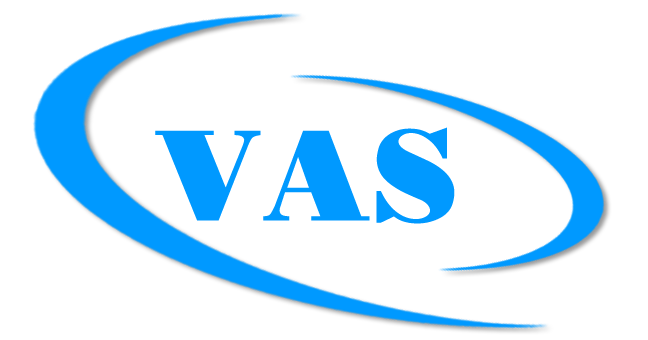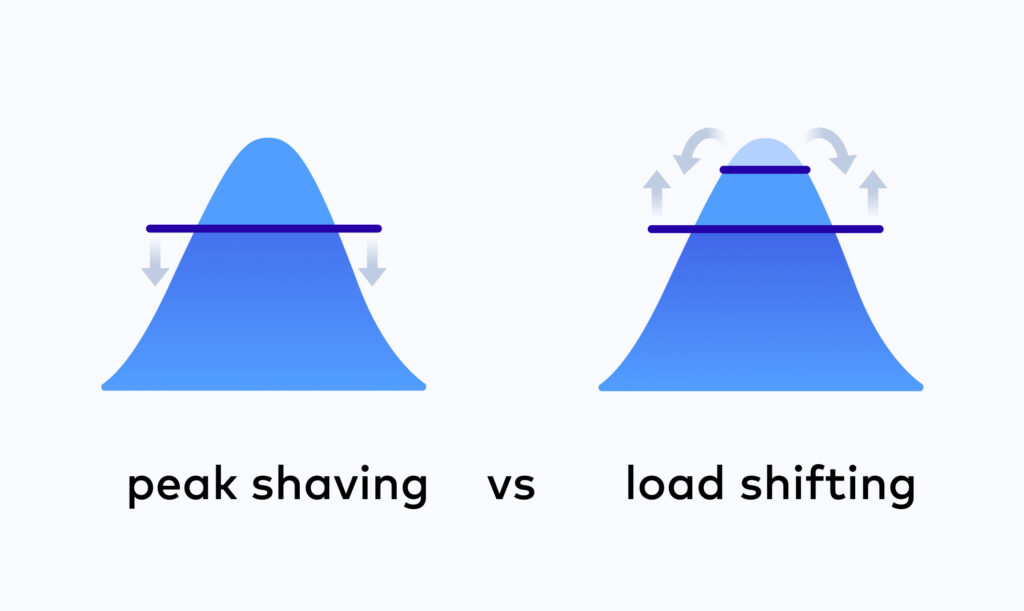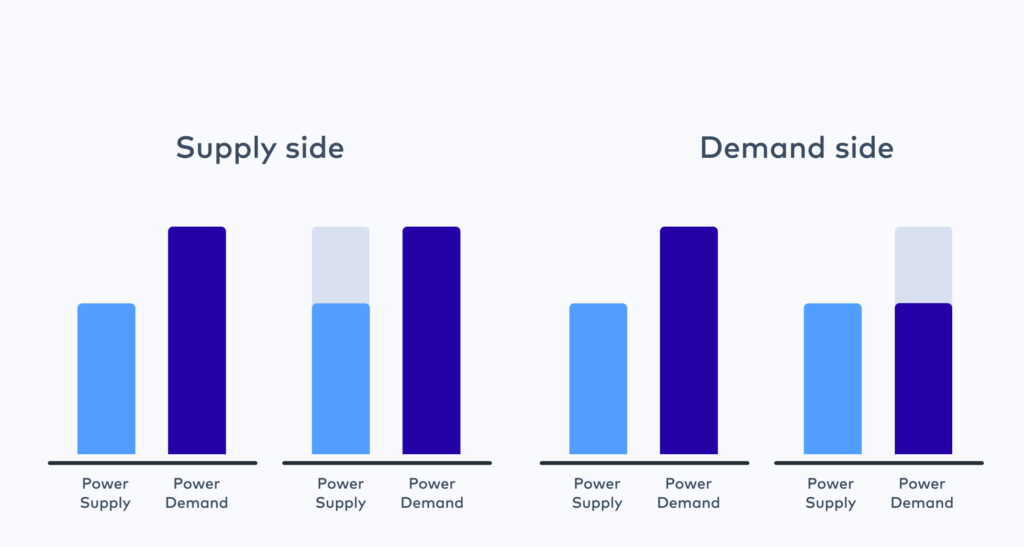HOW DOES PHYSICAL PS WORK?
To avoid overload and surpass the optimal power consumption curve of a plant while avoiding high electricity costs during peak hours, developed countries employ two main strategies: Peak Shaving and Load Shifting.
Peak Shaving is a strategy where electricity consumption is temporarily reduced to prevent demand peaks by reducing production or sourcing additional power from local sources like rooftop solar systems, batteries, or even bidirectional electric vehicles.
In contrast, Load Shifting is a strategy where electricity consumption is temporarily reduced and shifted electricity consumption to periods with lower electricity prices or lower grid demand. This is suitable for flexible loads that can be easily switched without impacting operations, such as electric vehicle charging.
Peak Shaving can be implemented through either demand-side management or supply-side management.
The goal of demand-side management is to reduce demand by deploying various strategies. For example, in the case of electric vehicles, an energy management system can automatically limit the power allocated to EV charging infrastructure. In industrial settings, non-essential or non-critical heavy machinery that is not in use can be turned off.
Supply-side management involves utilizing local power sources to reduce dependence on the grid during peak periods. Integrating energy sources such as solar power systems, batteries, or fuel cells is crucial. Fossil fuel-powered sources, like backup generators, can also be used, but they produce more emissions.
Demand-side and supply-side management can be applied individually or in combination. All methods reduce load at the grid connection point, successfully cutting peak demand.

 Tiếng Việt
Tiếng Việt 中文 (中国)
中文 (中国)

